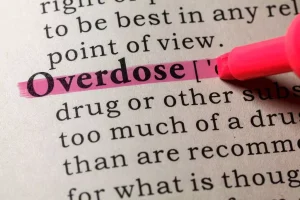
Groups like Alcoholics Anonymous (AA) have been helping people achieve and maintain sobriety for decades. They provide a sense of community and ongoing support that can be invaluable in the recovery journey. The treatment may last from 8 to 24 weeks and is often used as an adjunct therapy alongside other treatments, such as cognitive behavioral therapy (CBT) or 12-step programs.
More on Substance Abuse and Addiction
Many people with SUD have a low or moderate desire to quit, despite the health, financial, social, and legal consequences the SUD may be causing. For most people, the main goal of treatment is maintaining abstinence, as it is significantly linked to a positive long-term prognosis. They can help rewire the brain in a variety of ways to put the person back in the driver’s seat. Some AAC facilities, such as Laguna Treatment Center and Greenhouse Treatment Center, also have a pool. If you’re attending rehab at one of these facilities, you should bring 1 bathing suit (bikinis are not permitted and one-piece swimsuits must be appropriate—no thongs).
More in Addiction
Also check to ensure that the program is run by licensed, well-trained mental health professionals and addiction specialists. Regardless of a program’s length in weeks or months, support and long-term follow-up are crucial to recovery. A quality treatment Alcoholism Treatment Program program not only addresses unhealthy drinking but also considers the emotional pain and other life problems that contribute to your drinking. Residential treatment involves living at a treatment or rehab facility while undergoing treatment during the day.
Setbacks Are Part of the Process
Inpatient treatment often refers to care provided in a hospital setting, whereas residential care refer to treatment provided in a hotel-like setting. First, it’s important to understand the challenges of helping someone with addiction. It’s not as simple as telling them to “just stop drinking.” Addiction is a complex disease that affects the brain, and recovery is a process. Once you know your triggers, it’s time to develop coping strategies. This might include deep breathing exercises, calling a sponsor, or hitting the gym. The key is to have a toolbox of healthy alternatives to drinking that you can reach for when the urge strikes.


Couples and family counseling incorporates spouses and other family members in the treatment process and can play an important role in repairing and improving family relationships. Studies show that strong family support through family therapy increases the chances of maintaining abstinence (not drinking) compared with people going to individual counseling. Cognitive–behavioral therapy can take place one-on-one with a therapist or in small groups. This form of therapy is focused on identifying the feelings and situations (called “cues”) that contribute to heavy drinking and managing stress that can lead to a return to drinking.
Work performance could suffer, leading to lost opportunities or even job loss. It’s like watching a train wreck in slow motion, and it’s heartbreaking. Approved medications for alcohol use disorder and tobacco use disorder are also available. Each program has its own costs, so it’s important to understand how to pay for treatment.

Premier David Eby made a public safety pitch Sunday, announcing mental health units at correctional facilities
The Navigator helps adults find alcohol treatment for themselves or an adult loved one. If you are seeking help for a teen, check out these recommended adolescent treatment resources. Given the diverse biological processes that contribute to AUD, new medications are needed to provide a broader spectrum of treatment options. Brief Interventions are short, one-on-one or small-group counseling sessions that are time limited. The counselor provides information about the individual’s drinking pattern and potential risks. After the individual receives personalized feedback, the counselor will work with them to set goals and provide ideas for helping to make a change.
- These treatment options encompass detoxification, inpatient, and outpatient programs, each serving different stages and severities of addiction.
- Your duration in residential treatment is going to be based on your needs, substance use history, and treatment plan goals.
To discover whether your health insurance may cover the full or partial cost of treatment at any American Addiction Centers facility, enter your information in our form below. Aftercare can look different for everyone and may include moving into a sober living environment; continuing to attend group therapy, support groups, or a 12-Step program; or continuing individual or family therapy as well. Just as some people with diabetes or asthma may have flare-ups of their disease, a return to drinking can be seen as a temporary setback to full recovery and not as a failure. Seeking professional help can prevent a return to drinking—behavioral therapies can help people develop skills to avoid and overcome triggers, such as stress, that might lead to drinking.
- Each of these fee-based tools has a research base that shows its potential to help people cut down or quit drinking.
- These are intensive, residential programs where you live at a treatment facility for a period of time, usually 30 to 90 days.
What is the Difference Between Inpatient and Residential Treatment?
American Addiction Centers (AAC) is committed to delivering original, truthful, accurate, unbiased, and medically current information. We strive to create content that is clear, concise, and easy to understand. Research shows that most people who have alcohol problems are able to reduce their drinking or quit entirely. Each of these fee-based tools has a research base that shows its potential to help people cut down or quit drinking.
Certain changes may continue to progress even after stopping drinking. Heavy alcohol use also affects vital organs like the liver, heart, lungs, and others, necessitating time for the body to return to normal functioning. BetterHelp can connect you to an addiction and mental health https://ecosoberhouse.com/ counselor. Your symptoms may last a week or more, typically hitting their worst within hours. You’re more likely to stick with a detox program when you have lots of help. This online tool is designed to help consumers find quality treatment for alcohol use disorder (AUD).